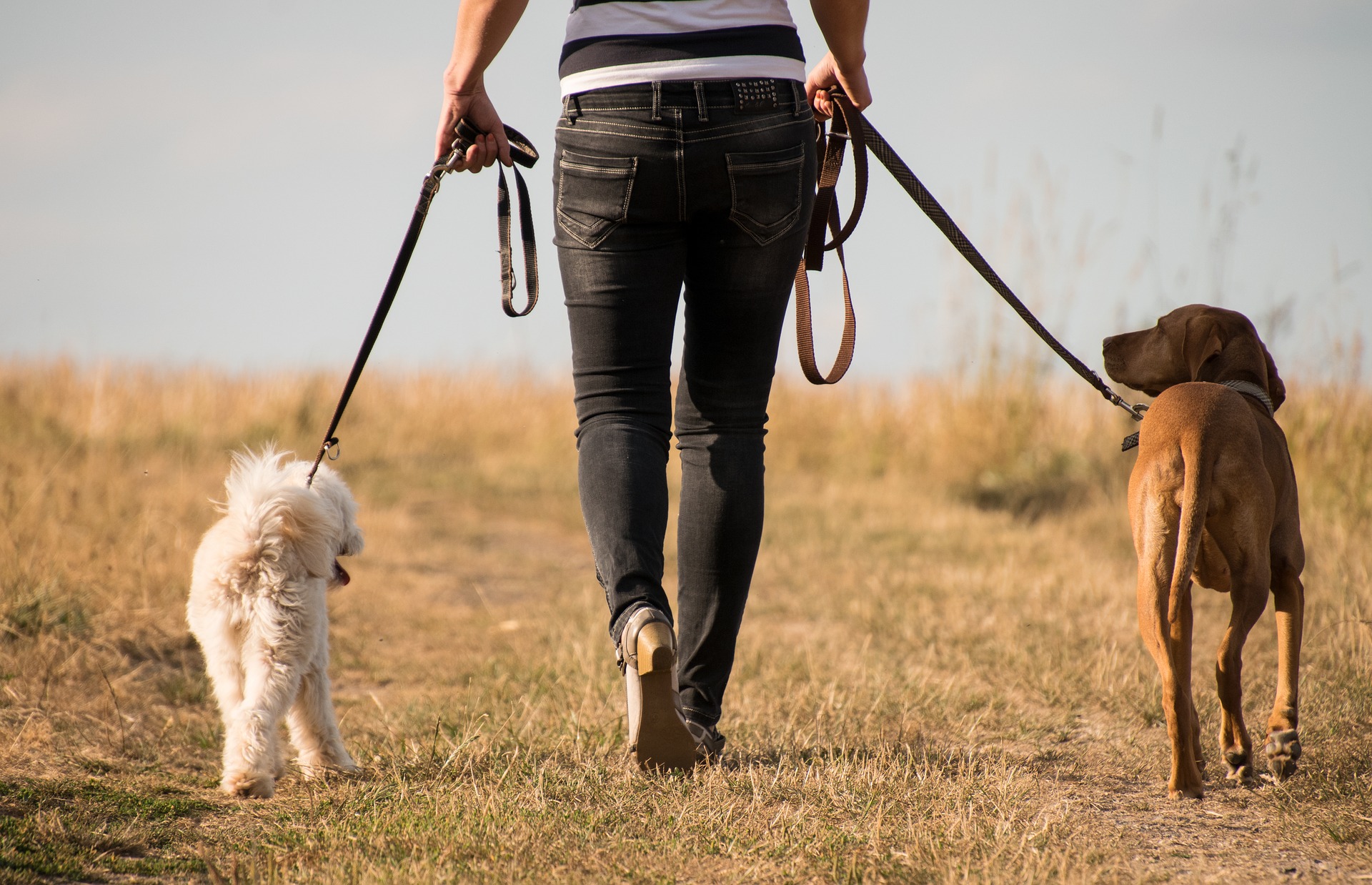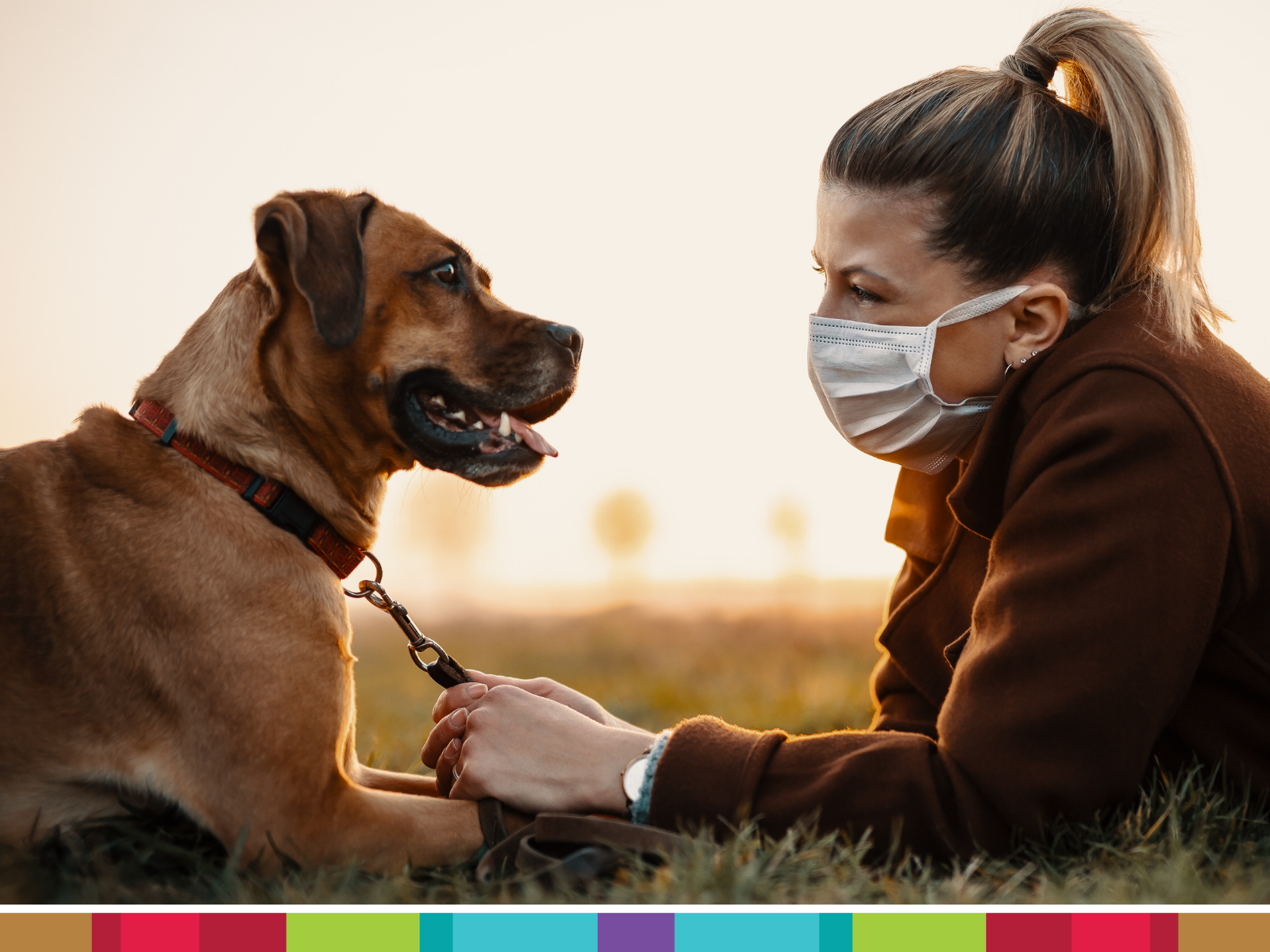Behaviour During COVID
5 Canine Considerations
There is no denying that 2020 caused a major disruption in our lives. It has also caused a lot of change for our canine companions. Some changes to our routine or schedule may benefit our pets, but others can cause stress.
Below we’ve assembled a few tips and resources to help prevent behavioural issues from developing while we move through 2021 with our best furr-iends.
1. Socialize Your New Puppy
Socialization promotes healthy development and that can prevent future behavioural issues. During times of social distancing and gathering restrictions, it has made it difficult to get young puppies the appropriate socialization they need to thrive.
Puppies undergo a sensitive developmental period until about 3-4 months of age, where they learn about their world and develop important memories. If a puppy is inadequately socialized or has negative experiences during this period, it can cause them to develop fearful behaviour. That is why it is essential that your puppy is introduced to various experiences during that time.
We’ve developed a free printable resource on basic Puppy Socialization, which you can find along with others on our Behaviour Resources page.
Socialization activities may need to be modified to follow public health measures, so we’re sharing some strategies which allow for social distancing:
- Bring your puppy outside in your front yard or in a residential area. You can also sit inside your vehicle with your puppy, and roll down your window. Verbally praise your puppy and them give treats for quietly watching people, cars, cyclists, or other things go by.
- Attend a puppy socialization class with social distancing measures (availability may depend on current public health measures).
- Attend a virtual puppy training class. Hearing different sounds from people or other dogs over Zoom, Skype or another software platform is a good experience for your puppy!
- Take your puppy for walks outdoors in different areas where you can safely distance. This allows them to see and smell new things, which is important for development and a great form of sensory enrichment.
- Set up your own puppy “jungle gym” at home. Find different objects or surfaces to place on the ground (e.g. yoga mat, towels, plastic table cloth, sofa cushions, bubble wrap, play tunnel). Encourage your puppy to step on them and explore through verbal praise and treats.
- Play different sounds for your puppy while giving them treats. You can play recordings of fireworks, thunder, lawn movers, airplanes or other noises they may encounter in future. Always start with the volume low and gradually increase it, so that you don’t accidently startle your puppy.
2. Create Positive Interactions
Dogs and Unfamiliar People
As we socialize less and at a distance with friends and family, this may actually be beneficial for dogs with reactivity issues. For reactive dogs, it is ideal to gradually introduce them to unfamiliar people at a distance with positive reinforcement. This process is called counter-conditioning. With the guidance of a certified dog trainer who uses reward-based training, you can develop a behavioural modification plan to start resolving or managing your dog’s reactivity.
We’ve developed a free printable resource on Leash Reactivity, which you can find along with others on our Behaviour Resources page.
Children and Dogs
If your children are home during the day, this may disrupt you dog’s typical routine and behaviour. For example, if your children are taking online classes, your dog may now be exposed to more activity in the household. To ensure interactions between your dog and children remain positive, you may want to consider some simple management changes.
We’ve developed a free printable resource on Child-Dog Interactions, which you can find along with others on our Behaviour Resources page.
3. Manage & Prevent Separation Anxiety
Separation anxiety occurs when a dog experiences stress while separated from their guardians or left alone. Stress behaviours a dog may display can include vocalizations (e.g. barking, howling), urination and defecation, destructive behaviours, attempts to escape (e.g. scratching at windows or doors), pacing, or drooling. A humane approach to separation anxiety will help alleviate your dog’s mental distress and reduce occurrences.
If you’ve been working from home during the COVID-19 pandemic, or had to self-isolate for several weeks and then return full-time to your office or workplace, this can be a huge disruption to your dog’s routine. Feeling suddenly alone after having you constantly around could trigger separation anxiety in any dog. Puppies can also develop separation anxiety if they are not taught how to be independent through positive reinforcement.
We’ve developed a free printable resource on Separation Anxiety as well as prevention strategies if your Transitioning from Home Back to Work, which you can find along with others on our Behaviour Resources page.
If your dog is showing significant signs of stress when you leave your home, then it is advised that you seek consultation from a veterinarian and certified dog trainer for assistance.
4. Enrich Your Dog’s Life
Providing plenty of enrichment is a great way to keep your dog mentally stimulated and occupied. Toys or activities that promote sniffing, exploration, chewing, problem solving, and basic training will help provide for your dog’s mental needs. If these are satisfied, your dog is less likely to be destructive or develop other behavioural issues.
We’ve developed a free printable resource on Canine Enrichments which you can find along with others on our Behaviour Resources page.
5. Set A Sleep Schedule
Just like us, dogs need an appropriate amount of sleep. Actually, they need even more sleep than we do! If you are working from home, this could be disrupting your dog’s natural sleep rhythms and they may have a difficult time settling down to rest or sleep, especially if you are busy around the house.
How To Promote Rest:
- Give them a quiet space to rest uninterrupted. This could be their kennel, a dog bed, or other comfortable space that is away from activity in the home.
- Make sure everyone in your household knows they shouldn’t disturb or interact with the dog when they are in their resting space.
- If your dog rests or sleeps in their kennel, it may help to drape a towel or blanket over the kennel to promote darkness and lessen distraction. Ensure they have enough room to turn around, stretch, and stand up in their kennel – dogs will avoid a kennel that is too small.
- Provide comfortable bedding in your dog’s resting area to encourage them to lay down.
- If you have children and they are attending virtual classes, make sure this area is not in the same space where your dog rests.
- It may help to play classical or calm music. This reduces noise distractions and promotes relaxation.
If your dog is chronically tired, this could lead to increased irritability, stress, and reactivity to people or other animals. Therefore, it is important that we try to maintain a relatively consistent and quality sleep schedule for our us and our dog.

Our professional dog trainers are here for you
If you could use the support of an expert while navigating these behaviour issues with your dog, we offer both training classes and private behaviour consultations for personalized help.
Contact us by calling 780-491-3521 or email [email protected]
For fun ways to Connect with Pets at home, check out our Humane Education at Home page.
Learn How to Healthy Cranberry Dog Biscuits!

